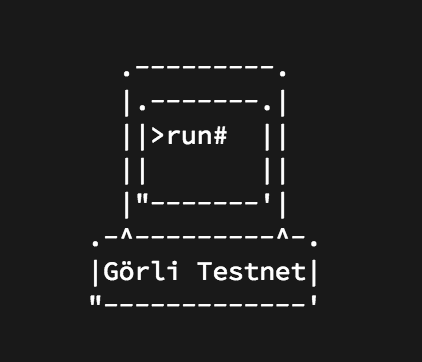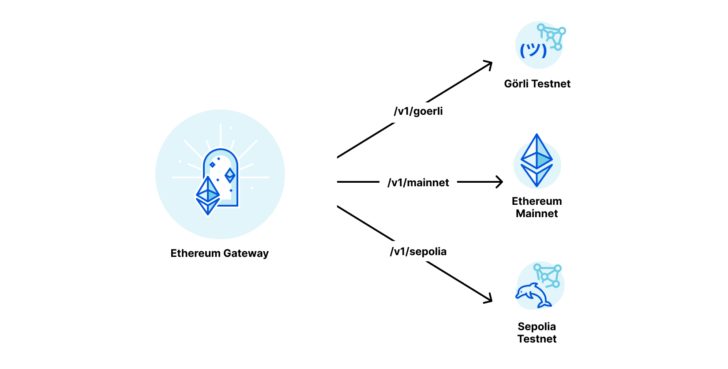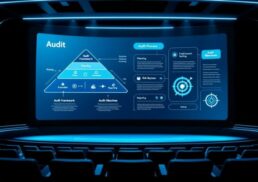Are you tired of slow, unreliable Ethereum testnets that hinder your development process? Look no further! In this thrilling blog post, we will explore the Goerli Testnet in 2023, a game-changing, public Proof-of-Stake (PoS) testnet that has taken the Ethereum development community by storm. With its open validator set and outstanding features, Goerli Testnet offers an unparalleled experience for developers seeking to test their applications and Ethereum upgrades.
Fasten your seatbelts as we dive into the world of Goerli Testnet! Discover its unique Proof-of-Stake model, its role in Ethereum upgrades, and how it compares to other Ethereum testnets. We will also guide you through the process of developing on Goerli Testnet, from acquiring test ETH to understanding RPC and API support. Lastly, we will showcase some exciting real-world use cases of Goerli Testnet in the booming industries of DeFi, NFTs, and gaming.
Table of Contents
Short Summary
Explore the ultimate developer’s paradise of Goerli Testnet, a public PoS environment with higher throughput and faster block times!
Join as a validator to experience increased security, fast transactions & rewards on the Goerli network!
Get ready for Ethereum 2.0 development with Goerli Testnet providing secure testing ground, low storage requirements & larger validator set!
Understanding the Goerli Testnet

Imagine a world where Ethereum testnets are not only fast and reliable, but also easily accessible for anyone to participate. Welcome to the Goerli Testnet! Launched as a cross-client testnet, Goerli provides a public PoS environment with an open validator set, enabling developers from all corners of the globe to join and contribute to the network.
With the thrilling testnet deprecation earlier this year, numerous projects have migrated to Goerli Testnet, resulting in an enormous demand for ether due to the testing of staker setups and sinks. Goerli Testnet is truly a developer’s paradise, as it combines the benefits of a PoS model with the accessibility of an open validator set.
However, it’s essential to note that Goerli requires more storage and time to sync due to its large state. But don’t let that deter you! The trade-offs are well worth it, as Goerli offers higher throughput and faster block times than other Ethereum testnets.
Goerli’s Proof-of-Stake Model
Why are developers so excited about Goerli’s Proof-of-Stake model? The answer lies in the Casper FFG consensus algorithm! Validators stake their own Ether to participate in the network, and in return, they are rewarded with newly minted Ether. This model not only allows developers to reap the benefits of stakes, but also ensures that the network operates securely and efficiently.
Goerli’s PoS model outshines other Ethereum testnets with its mind-blowing speed and high throughput. With faster block times and increased transaction capacity, Goerli is perfect for testing applications that demand low latency and high performance. Moreover, the Casper FFG consensus algorithm adds an extra layer of security, making Goerli more resistant to attacks than other Ethereum testnets.
Validator Participation in Goerli
Validators are the superheroes of the Goerli Testnet, ensuring the network’s security and integrity by staking their own cryptocurrency. To join the Goerli network and become a part of this elite force, validators simply need to stake ETH tokens and participate in consensus.
Validators on the Goerli network can expect a plethora of benefits, such as increased network security, lightning-fast transaction times, and the opportunity to earn rewards for their participation. No wonder Goerli Testnet attracts developers and validators alike, making it a vibrant and thriving ecosystem.
Goerli Testnet’s Role in Ethereum Upgrades
Goerli Testnet serves as a proving ground for Ethereum developers, allowing them to assess the performance of various upgrades and changes before unleashing them on the mainnet. Its stability, speed, and low transaction fees have made Goerli Testnet a popular choice among Ethereum developers for testing their code in a real-world environment, identifying potential issues, and ensuring a smooth deployment on the mainnet.
In addition to its role as a testing network, Goerli Testnet is also instrumental in preparing for the upcoming merge of Prater and Goerli testnets and supporting Ethereum 2.0 development. This testnet has become an invaluable tool for developers, enabling them to explore new features, consensus algorithms, and other changes to the Ethereum network with confidence.
Preparing for the Merge
The Goerli/Prater Merge is an exciting event that will unite two Ethereum testnets into one, allowing developers to test their applications on a single network. Validators need to be prepared for this momentous occasion by running both an execution and consensus layer client to remain on the network during and after The Merge. Infrastructure providers should diligently monitor overall network stability and finalization status to ensure a seamless transition.
What about transaction fees after The Merge? Fear not, as transaction fees will continue to be paid, burned, and distributed on the execution layer. With Goerli Testnet’s role in The Merge, developers can breathe a sigh of relief knowing that their applications will continue to operate smoothly on the new, unified testnet.
Supporting Ethereum 2.0 Development
As Ethereum 2.0 ushers in a new era of blockchain technology with its upgraded speed, efficiency, and scalability, Goerli Testnet plays a significant role in supporting its development. Developers can utilize Goerli Testnet to test features and upgrades for Ethereum 2.0, such as sharding and cross-shard communication, in a safe and secure environment.
Goerli Testnet offers developers a plethora of advantages for Ethereum 2.0 development, such as a secure and reliable testing environment, the ability to experiment with new features and upgrades without risking the main Ethereum network, and free usage with low barriers to entry.
With Goerli Testnet, developers can confidently embark on their journey towards the future of Ethereum 2.0.
Comparing Goerli with Other Ethereum Testnets

How does the Goerli Testnet stack up against other Ethereum testnets such as Rinkeby, Kovan, and Ropsten? The key differences lie in sync time and storage requirements, network stability, and validator set. Goerli Testnet’s impressively fast sync time and low storage requirements outshine its competitors, making it the preferred choice for many Ethereum developers.
Moreover, Goerli Testnet boasts a more stable network and a larger validator set thanks to its PoS consensus algorithm and open validator set. These factors contribute to Goerli Testnet’s reputation as a superior testing environment for Ethereum developers.
Sync Time and Storage Requirements
One might wonder why the Goerli Testnet requires more storage and time to sync compared to other Ethereum testnets like Rinkeby, Kovan, and Ropsten. The answer lies in its larger state and history, which enables higher throughput and faster block times. This trade-off is a small price to pay for the benefits Goerli Testnet offers developers.
On the other hand, Sepolia testnet, with its much smaller state and history, allows for super fast syncing and requires minimal disk space to run a node. While Sepolia has its advantages, Goerli Testnet remains a popular choice for developers due to its higher throughput and open validator set.
Network Stability and Validator Set
When it comes to network stability, Goerli Testnet truly shines. Its PoS consensus algorithm and open validator set make it far more stable than other Ethereum testnets. Developers can rely on Goerli Testnet to provide a dependable, secure testing environment for their applications.
In comparison, Sepolia testnet is a permissioned PoS testnet with a closed validator set. While this setup offers some benefits, Goerli Testnet’s open validator set and greater network stability make it the preferred choice for many Ethereum developers.
For more info, visit What are the differences between Goerli and other …
Developing on Goerli: What You Need to Know
Now that you’re familiar with the benefits of Goerli Testnet, it’s time to start developing! But before you dive in, you’ll need to acquire test ETH and set up wallets, as well as understand RPC and API support when working with Goerli Testnet.
Don’t worry, we’ve got you covered! In the following sections, we will guide you through the process of acquiring test ETH, setting up wallets, and exploring RPC and API support on Goerli Testnet. With this knowledge, you’ll be well-equipped to make the most of Goerli Testnet’s incredible features.
Acquiring Test ETH and Setting Up Wallets
To get started with Goerli Testnet, you’ll need test ETH, which can be acquired from faucet websites like Alchemy, Quicknode, and Linea. Test ETH can also be purchased from exchanges, ensuring that you have the necessary funds to test your applications and smart contracts on Goerli.
Once you have your test ETH, you’ll need to set up wallets for Goerli Testnet. This can be done using popular tools like Metamask or Alchemy. With your wallets set up and test ETH in hand, you’re ready to start developing on Goerli Testnet!
RPC and API Support
As a developer, you know that RPC and API support is crucial for interacting with blockchain networks. RPC, or Remote Procedure Call, is a protocol that allows one machine to call a subroutine or function on another machine without having to understand the network’s details.
Goerli Testnet offers comprehensive RPC and API support, including core JSON-RPC methods for querying the blockchain, submitting transactions, and interacting with smart contracts. Additionally, Goerli Testnet provides archive node support for accessing historical data and trace API endpoints for tracing the execution of transactions.
With this robust support, developers can confidently work on their projects using Goerli Testnet.
Real-World Use Cases of Goerli Testnet
Beyond its unparalleled features and benefits, Goerli Testnet also has real-world use cases in the fast-growing industries of decentralized finance (DeFi), non-fungible tokens (NFTs), and gaming. Developers can leverage Goerli Testnet for testing and development purposes, ensuring that their applications are ready for deployment on the Ethereum mainnet.
In the next sections, we’ll explore how Goerli Testnet is used in DeFi projects, NFTs, and gaming, showcasing the versatility of this powerful testnet.
Decentralized Finance (DeFi) Projects
The world of decentralized finance (DeFi) is booming, and Goerli Testnet plays a pivotal role in its development. DeFi projects, such as decentralized exchanges, lending protocols, and stablecoins, rely on Goerli Testnet for testing and development purposes.
Goerli Testnet’s stability, speed, and low transaction fees make it an ideal platform for developers working on DeFi projects. By using Goerli Testnet, developers can ensure their DeFi applications are secure, efficient, and ready for deployment on the Ethereum mainnet.
Non-Fungible Tokens (NFTs) and Gaming
Non-fungible tokens (NFTs) and gaming projects are also flourishing on Goerli Testnet. NFTs, which represent unique digital assets such as in-game avatars, digital art, and collectibles, are being developed and tested on Goerli Testnet.
Gaming projects that incorporate NFTs for in-game assets like characters, weapons, and items benefit from Goerli Testnet’s stability and low transaction fees. Developers can confidently test their NFTs and gaming projects on the Goerli Testnet before launching them on the Ethereum mainnet.
Summary
As we reach the end of our exploration of the Goerli Testnet in 2023, it’s evident that this powerful testnet offers unparalleled benefits and features for Ethereum developers. From its unique Proof-of-Stake model and open validator set to its role in Ethereum upgrades and its real-world use cases, Goerli Testnet has proven to be an invaluable tool for the Ethereum development community.
With Goerli Testnet at their disposal, developers can confidently test their applications, explore new features, and push the boundaries of what’s possible in the world of blockchain technology. The future is bright for Ethereum development, and Goerli Testnet is here to light the way.
Frequently Asked Questions
What is goerli?
Goerli is an amazing and revolutionary testnet created to simulate the behavior of the Ethereum mainnet! It was launched in early 2019 and was named after a small village in Germany. Goerli is an incredibly popular testnet among Ethereum developers because of its stability, speed, and low transaction fees – providing a great opportunity for experimentation without risk to real funds or the main chain.
So whether you’re a blockchain enthusiast or a developer, Goerli is definitely the testnet for you!
Is it Gorli or Goerli?
Goerli is the way to go! It’s the first community-built testnet for Ethereum and it’s here to stay. Launched in early 2019, Goerli is a proof-of-authority-based environment for developers to try out their decentralized applications without risking real funds or the main chain.
It’s the perfect platform for innovators and tinkerers alike! So come on, get your testnet on and join the Goerli revolution today!
How much is goerli Ethereum?
Wow! Get excited – Goerli Ethereum is currently priced at $0.122041 per GETH with a 24-hour trading volume of $25,365, and a -3.08% price decline in the last 24 hours!
This exciting opportunity to invest in Goerli Ethereum is not to be missed!









